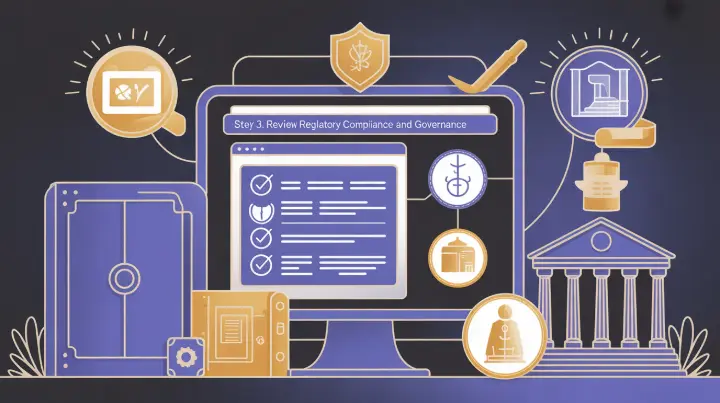In today's rapidly evolving financial landscape, artificial intelligence is revolutionizing how insurance companies and banks operate. Global spending on AI in financial services has surpassed 20 billion dollars in 2025, with 86 percent of executives planning to increase investments through the period.
This surge reflects the technology's potential to deliver productivity gains of up to 30 percent in banking and insurance over the next 15 years, according to market analyses. For instance, AI adoption in the banking, financial services, and insurance sector leads with a 19.6 percent market share, outpacing other industries like healthcare.
Real-world examples abound, such as Bank of America's use of AI for personalized investment strategies, which boosts customer engagement and revenue streams, or insurers leveraging AI for real-time claims processing to cut operational costs by 30 to 50 percent.
However, realizing these benefits requires a thorough readiness assessment. This blog outlines five essential steps to help insurance firms and banks evaluate their infrastructure, drawing on current market data and practical examples to guide effective AI integration.
Step 1: Evaluate Data Infrastructure and Quality
High-quality data forms the foundation of any successful AI initiative in financial services. Market analysis shows that AI-driven systems in banking could add up to 340 billion dollars annually by enhancing credit scoring and fraud detection, but this depends on clean, accessible datasets.
In insurance, 28 percent of experts identify big data and analytics as a top priority for 2025, underscoring the need for robust data governance to support predictive modeling. Start by auditing your data sources, such as customer transaction histories in banks or policy claims in insurance, to spot issues like incompleteness or bias.
A practical example comes from insurers using AI for risk assessment, where tools analyze vast datasets from wearables and environmental sources to create dynamic pricing models. Banks like JPMorgan Chase employ similar approaches for fraud detection, processing billions of transactions in real time to identify anomalies and reduce losses.

If data is siloed, invest in cloud-based solutions; reports indicate that 75 percent of large banks with over 100 billion dollars in assets have integrated AI strategies by 2025, often starting with data unification. This step not only minimizes risks but also positions institutions to capture market share through more accurate insights.
Step 2: Assess Technical Infrastructure and Scalability
AI requires powerful computing resources to handle complex workloads effectively. Industry data reveals that AI could save banks up to 487 billion dollars by 2024 through efficiencies in operations, with projections extending into 2025 showing continued growth in areas like algorithmic trading.
In banking, sectors like fintech lead with 49 percent of organizations classified as AI leaders, thanks to scalable infrastructure that supports real-time data processing.
For insurance, AI adoption for claims forecasting demands flexible systems, with 78 percent of carriers planning increased tech budgets in 2025. Evaluate your hardware, software, and cloud capabilities to ensure they can manage machine learning models without bottlenecks.
Real-world applications include UBS's deployment of generative AI assistants for real-time portfolio analysis, which improves rebalancing speed and client engagement by leveraging scalable cloud environments. In insurance, companies like Allstate use AI for augmented claims management, processing data from connected devices to automate assessments and reduce processing times.

If gaps exist, consider hybrid cloud upgrades or vendor partnerships; analysis from leading consultancies emphasizes that such investments enable banks to achieve a 33 percent annual growth in AI adoption. This scalability ensures institutions remain competitive in a market where AI-driven personalization is becoming standard.
Step 3: Review Regulatory Compliance and Governance
The financial sector's heavy regulation makes compliance a cornerstone of AI readiness. Market insights highlight that 55 percent of AI use cases in UK financial services involve some autonomous decision-making, but only 2 percent are fully autonomous due to governance needs.
In banking, customer service accounts for 18 percent of AI-generated value, while in insurance it's 24 percent, yet both require frameworks to address biases and ensure explainability. Assess your policies against standards like GDPR and those from bodies such as the Financial Stability Board, focusing on model risk management.
Examples include Deutsche Bank's AI system for monitoring customer transactions, which flags anomalies for anti-financial crime teams and learns from feedback to comply with regulations. In insurance, AI tools for fraud detection, used by firms like Progressive, analyze claims data in real time to meet compliance while reducing fraudulent payouts.
With 91 percent of asset managers planning AI use for research by 2025, strong governance mitigates risks like data breaches. Conducting regular audits builds stakeholder trust and avoids penalties in a landscape where AI oversight is intensifying.
Step 4: Gauge Workforce Skills and Cultural Readiness
People are key to AI success, as technology alone cannot drive transformation. Surveys indicate that 74 percent of companies struggle to scale AI value, often due to skills gaps, with fintech and banking having the highest concentrations of AI leaders at 49 percent and 35 percent respectively.

In insurance, 41 percent of agencies are still exploring generative AI, highlighting the need for training. Perform a skills audit across roles, from data scientists to customer-facing staff, and foster a culture of innovation through leadership support.
M&T Bank's adoption of nCino's Continuous Credit Monitoring exemplifies this, using explainable AI for risk insights while upskilling teams on its integration. In insurance, carriers train staff on AI for sales hyperpersonalization, as seen in virtual agents handling policy queries and claims initiation.
With AI expected to create 97 million new jobs by 2025 while displacing others, reskilling programs are vital for maintaining competitiveness. Aligning workforce development with business goals ensures buy-in and maximizes AI's impact on efficiency.
Step 5: Align with Business Strategy and Identify ROI Opportunities
Finally, integrate AI into your core strategy to realize tangible returns. Market projections show AI in finance growing to 73.9 billion dollars by 2033 at a 19.5 percent CAGR, driven by applications like predictive analytics. In banking,
AI could generate 1 trillion dollars in savings by 2030, while insurance sees opportunities in reinsurance strategies forecasting risks more accurately. Map AI use cases to goals, such as personalization in banking or automation in insurance, and pilot projects to measure ROI against KPIs.
Citi's launch of AI-powered virtual assistants for wealth management demonstrates alignment, enabling autonomous decisions that enhance engagement. Insurers like those using AI for next-best-action recommendations in claims achieve up to 70 percent real-time resolution for simple cases.

Continuous monitoring, as 60 percent of institutions deploy AI for fraud systems in 2024-2025, ensures adjustments for maximum value. This strategic focus turns AI from a buzzword into a driver of sustainable growth.
By methodically following these steps, insurance companies and banks can navigate AI adoption confidently, leveraging market trends and examples to minimize risks and amplify opportunities. Begin with a comprehensive self-assessment to position your institution at the forefront of financial innovation.